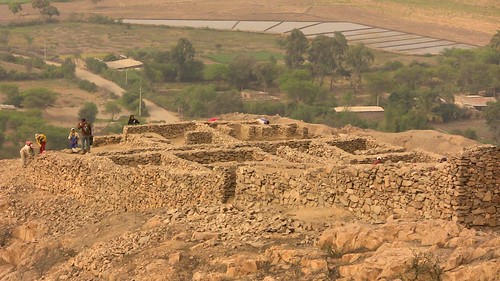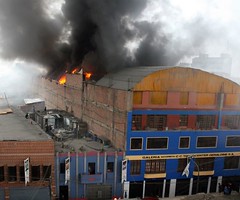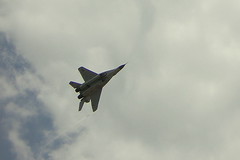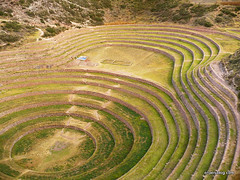One of Peru’s greats, the embodiment of Peruvianism and the creole culture of Peru’s coastal regions, passed away today as a result of poor general health. The loss of this one man that became a symbol of Peruvian identity will be felt deeply across Peru and especially on the coast, but also across Latin American and the world. His inimitable voice captivated his listeners in a way that few other artists have ever been able to do, somehow making every word his sang sound unmistakeably and unequivocally PERUANO.
Category: "Modern Peru"
Miguel Grau and the Battle of Angamos
Known as the Gentleman of the Seas, Admiral Miguel Grau is remembered by friends and enemies alike as not only a great tactician in naval warfare, but also for his chivalry, the like of which had not been seen before or since. He died in combat defending Peru against invading aggressors at the Battle of Angamos on the 8th of October 1879, and is remembered on this day each year with a public holiday.
Peruvian Paso horses set off on journey to Lima
Known as one of the world’s finest breeds of horses, the Peruvian Paso Horse (Caballos Peruano de Paso) is a symbol of pride for Peru. Bred carefully over centuries, its unique gait makes it the most comfortable horse there is to ride and beautiful to watch. And it needs to be comfortable for the long journey ahead for a group of aficionados setting off from Ica.
Tacna’s double independence celebrations
For Peru’s southern-most region of Tacna, independence celebrations last twice as long as in the rest of the country. For it was this region that gained its freedom twice, the first time from the Spanish, and the second time from Chilean oppression.
The revolt of Túpac Amaru II
Born José Gabriel Condorcanqui in 1742, he was the great-grandson of the last Inca emperor Túpac Amaru. Like his great-grandfather before him, he was destined to resist the Spanish occupation, and, like his great-grandfather before him, was destined to meet the same fate.
Chucuito, Callao
Where old Callao ends and La Punta begins is Chucuito, a little barrio on the rocky beaches to the side of Peru’s, main port. Originally settled by Italian immigrants as recently as the late 1800s, it soon merged seamlessly into its increasing urban surroundings.
Al Jazeera’s take on Lima Street Food [Featured]
With a focus primarily on what Andean communities have contributed to this city’s famous cuisine, Al Jazeera takes a look at street food in Lima.
The ‘Peruvian vampire’ from East Lancashire [Featured]
Sarah Roberts, an East Lancashire woman who died 96 years ago in Peru, is one of the most iconic cult figures in the South American country. According to Peruvian legend, she had to be buried there as nowhere else in the world would take the casket of a woman believed to be one of the three brides of Dracula. But historians in East Lancashire said Sarah was ‘just a cotton weaver’ and that there was no substance whatsoever in the Peruvian myth.
Colonial Callao
Starting life as a rocky bay that was the nearest natural port to Pizarro’s capital of Los Reyes, El Callao soon became the most important port in the Spanish colonies. It has witnessed colonial splendour, pirate attacks, disastrous tsunamis, battles, republican splendour and economic collapse. Each of these events have left a mark on the city and the chalacos that live there, many of these marks visible to this day.
The first Peruvian car
Such is Peruvian ingenuity that this was the first nation in South America to produce high-quality automobiles. World-beating ones at that. But as great as Peruvian creativity… is a lack Peruvian self esteem. What could have been the start of a major Peruvian industry was snuffed out by Peruvians themselves, who then, as now, see everything from abroad as better, whether it really is or not.
Barin Bababo: Shipibo Konibo: Cosmovision of an Amazonian People [Featured]
I wrote a short time ago about the Shipibo people, an indigenous Amazonian tribe, some of whom now live on the polluted river Rímac in Lima’s desert. (Alejandro also introduced us to the River Rimac Project)
Here, Alejandro tells us more about the Shipibo people living in Rimac, and their fascinating artwork.
Real Felipe Fortress
The Fortaleza del Real Felipe is the most prominent landmark in Callao. Built during colonial times, it was used to defend Spain’s most important port in the Americas against pirates and corsairs who would otherwise raid Callao or nearby Lima as they did up and down the Pacific coast. Today it is a tourist attraction and museum run by Peru’s army.





![Chicha Restaurant, Cusco [Featured]](http://farm5.static.flickr.com/4101/4784536117_a4e3301c94_m.jpg)




